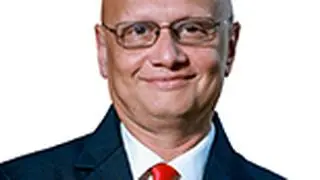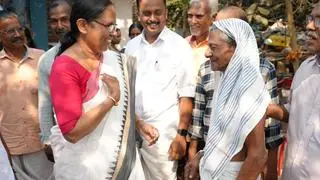Ahmedabad, December 5
The second phase of Gujarat elections held on Monday, saw average turnout (provisionally) at 58.8 per cent sharply lower by about 12 per cent from 70.66 per cent recorded in the last elections of 2017. The provisional figures will be updated after the compilation of final voting data, which may increase the total turnout marginally.
The polling for the 93 seats of 14 districts across North Gujarat (32 seats) and Central Gujarat (61 seats) regions was held peacefully with no major incident recorded.
However, the lower turnout has worried the political parties, who attributed it to the ongoing marriage season and the dismayed gloomy voters, who didn’t turn up for the voting despite high-octane campaigning by the ruling Bhartiya Janata Party (BJP) and the new entrant Arvind Kejriwal’s Aam Aadmi Party (AAP).
The 2017 polls, which was under heavy influence of strong anti-BJP sentiment triggered due to caste agitations from Patidars, OBC and dalits, saw BJP winning 51 seats and Congress getting 39 out of the 93 seats of second phase. Three had gone to others.
Out of the 93 seats, Central Gujarat region has 61, where the average turnout was 58.42 per cent. The North Gujarat region’s 32 seats recorded average voting of 61.52 per cent. In the 2017 polls, the average turnout for the two regions was 69 per cent and 72 per cent, respectively.
The maximum voting was recorded in the North Gujarat districts of Sabarkantha (65.84 per cent) and Banaskantha (65.65 per cent) that has strong OBC and tribal population. The lowest voter turnout was recorded in Ahmedabad district at 53.57 per cent (66.28 per cent), which has the maximum urban population. The other urban pocket Vadodara district recorded average voter turnout of 60.38 per cent (72.08 per cent)
Some of the prominent seats that includes Chief Minister Bhupendra Patel’s Ghatlodia seat, saw turnout of 55.04 per cent, which was 68.62 per cent in 2017. Patel had won with a maximum margin of 1.17 lakh votes. On Vadgam seat, from where the Dalit leader Jignesh Mevani is a Congress candidate, the turnout was 60.17 per cent, sharply down from 72 per cent recorded in 2017. The Viramgam and Gandhinagar (South) seats being contested by Congress turncoats Hardik Patel and Alpesh Thakor respectively saw 60.31 per cent (68.1) and 58.21 per cent (70.64), respectively.
On the Mehsana seat, where BJP replaced former deputy chief minister Nitin Patel with a new face Mukesh Patel, saw a sharply lower turnout of 50.68 per cent (70.88 per cent).
In the Muslim-dominated constituencies of Ahmedabad city such as Dariapur seat and Danilimda seats witnessed turnout of 47.14 per cent and 55.39 per cent respectively, which is sharply lower than 2017. The tribal-dominated districts of Arvalli, Dahod, Mahisagar and Panchmahal saw higher voter turnout from other districts, but was still lower than the previous voting.
Notably, after the first phase of elections on December 1 for 84 seats, the Election Commission of India had expressed concerns over the unabated “urban apathy” from Shimla to Surat and it had appealed to the voters of Gujarat to come out in large numbers during second phase to compensate for low voting in 1st phase.
In the first phase of Gujarat polls, average voter turnout was recorded at 63.31 per cent about 4 per cent lower than 66.79 per cent in 2017.







Comments
Comments have to be in English, and in full sentences. They cannot be abusive or personal. Please abide by our community guidelines for posting your comments.
We have migrated to a new commenting platform. If you are already a registered user of TheHindu Businessline and logged in, you may continue to engage with our articles. If you do not have an account please register and login to post comments. Users can access their older comments by logging into their accounts on Vuukle.